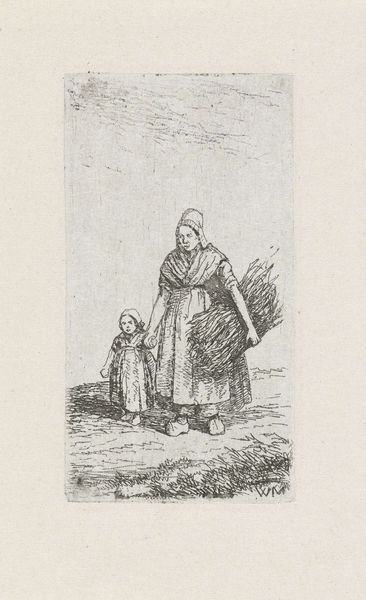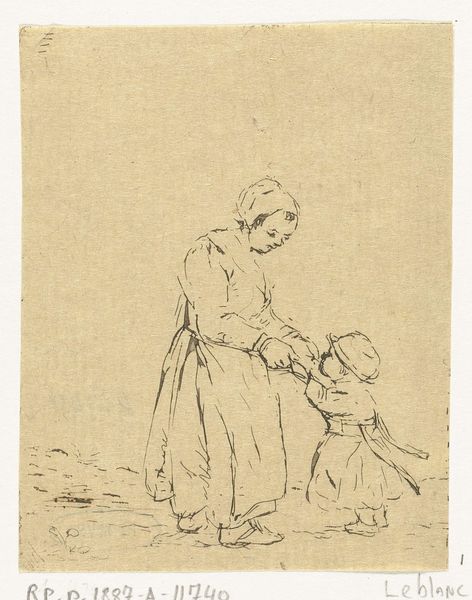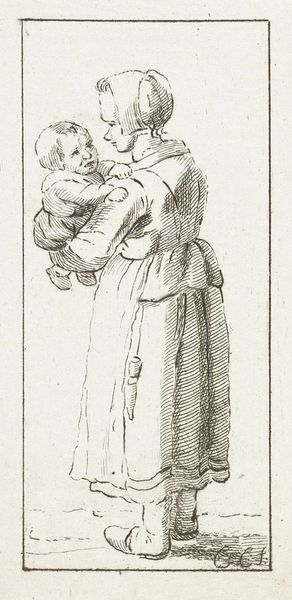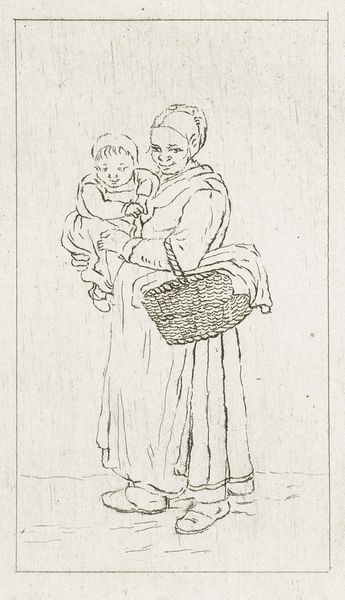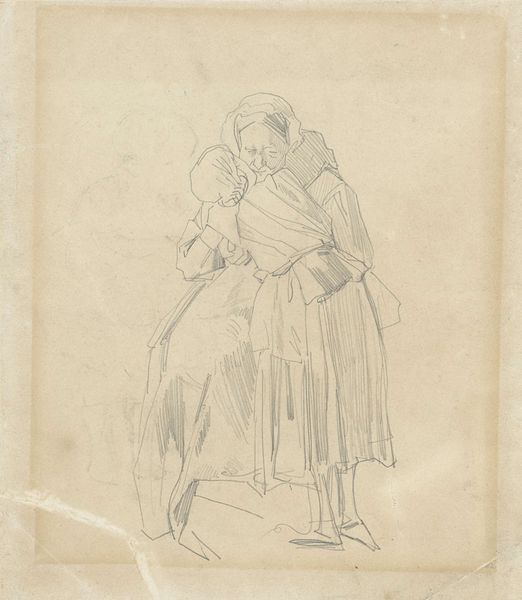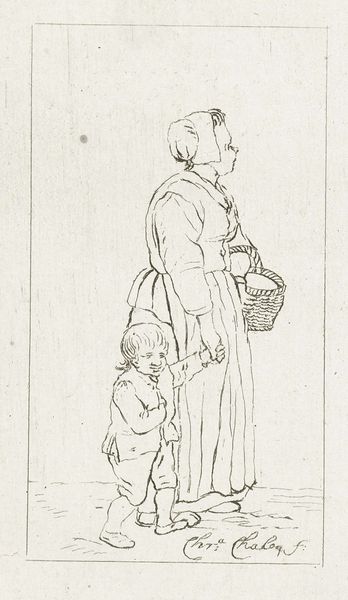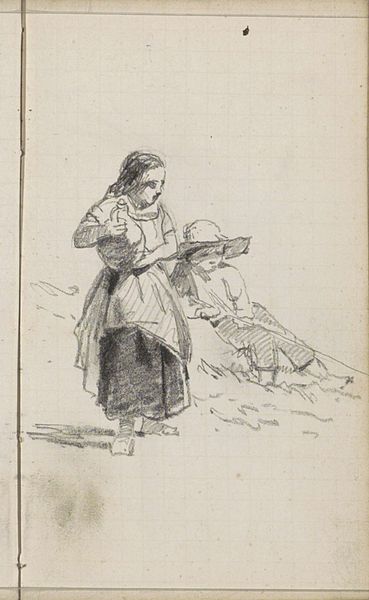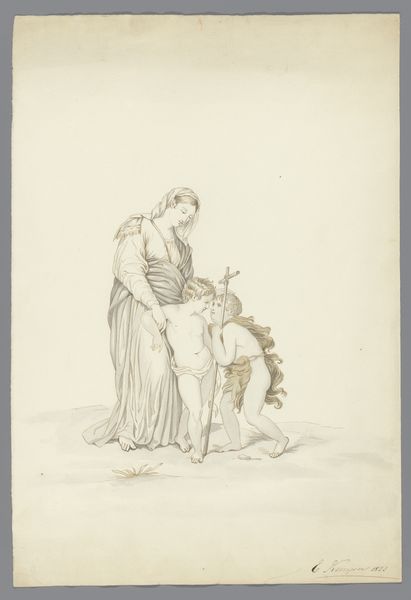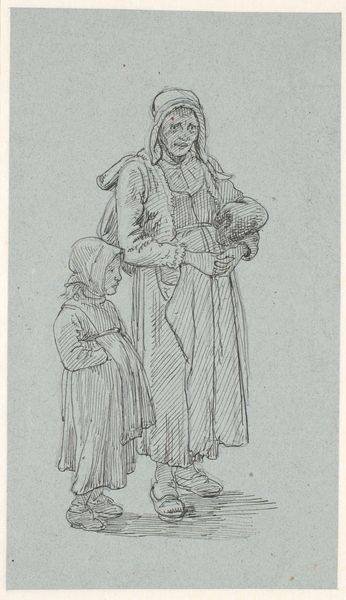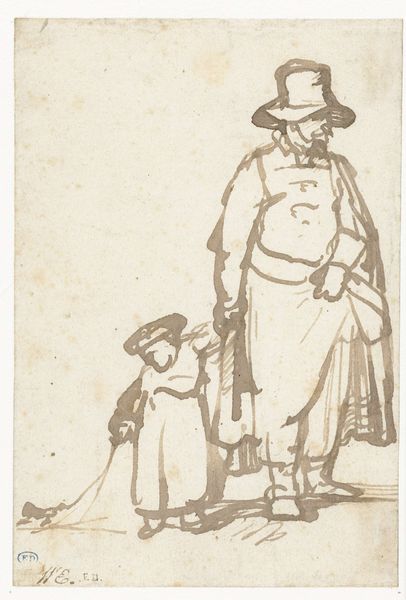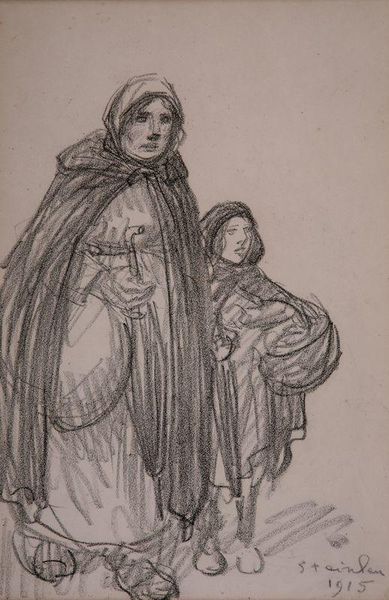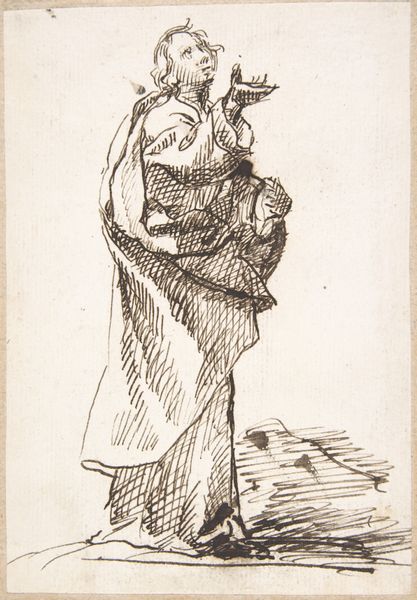
#
mother
#
quirky sketch
#
pen sketch
#
personal sketchbook
#
idea generation sketch
#
ink drawing experimentation
#
pen-ink sketch
#
sketchbook drawing
#
storyboard and sketchbook work
#
sketchbook art
#
initial sketch
Dimensions: height 80 mm, width 43 mm
Copyright: Rijks Museum: Open Domain
Curator: Looking at this sketch, there's a quiet intimacy conveyed, isn't there? Editor: Definitely. There's a tentative feel to the lines themselves, like the artist is figuring something out. But, as a first impression, it looks incredibly bleak. Barely any detail beyond the figures themselves. Curator: The work, dating from 1811 to 1867, is titled "Vrouw met een kind aan de hand"—"Woman with a child by the hand"—by Christiaan Wilhelmus Moorrees. There's something very archetypal about the imagery of the mother and child holding hands, traversing... well, it’s an empty space in the image. Editor: It's mostly ink on paper, right? Probably a fairly cheap, accessible means for the artist to quickly explore this imagery. Curator: Indeed. We often imbue the maternal image with all sorts of symbolic weight: protection, nurture, continuity. It makes me consider how those ideals may have changed—or not—in the almost two centuries since it was created. Does that visual vocabulary, the link to cultural memory, remain potent? Editor: I am less convinced. Looking at the line weight and style, it almost feels like this drawing may be one of the pages from the sketchbook. I’d wager this wasn't even necessarily made for "display," but perhaps was exploratory and personal. And even the details—the clothing—signal something beyond those idealized roles. Those are clearly garments of labor, and practical, modest, rather than idealized forms. Curator: It challenges our urge to sentimentalize, perhaps. I agree that the texture invites the idea that this piece originated as part of some broader visual research within a sketchbook, and not as a finished, displayable piece. I hadn’t initially picked up on that. Editor: To be fair, there's something incredibly striking and immediate about seeing labor represented in simple sketches like these. Curator: It certainly focuses one’s attention away from simply "maternal symbolism," towards broader realities, and opens a much wider interpretive space, doesn't it? Thank you for your insights on this. Editor: Of course. Seeing how materiality shapes how we receive even the simplest drawing never fails to provide interesting alternative perspectives on any given art.
Comments
No comments
Be the first to comment and join the conversation on the ultimate creative platform.
